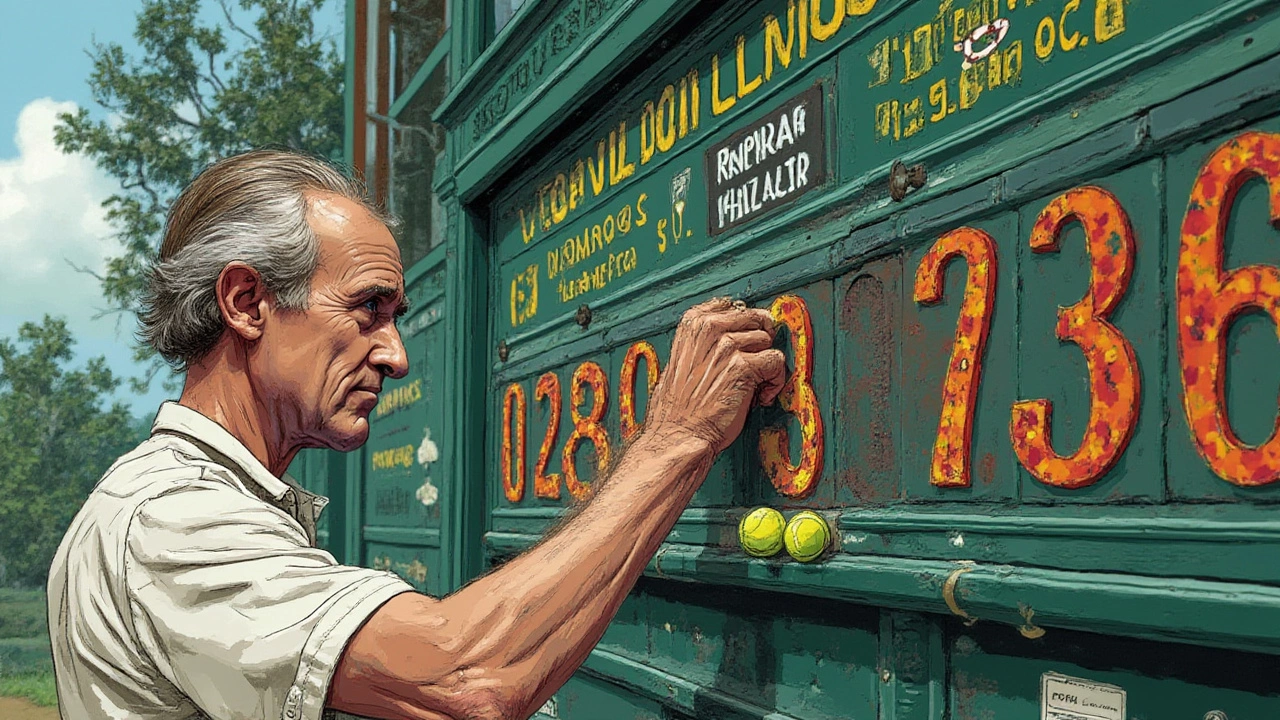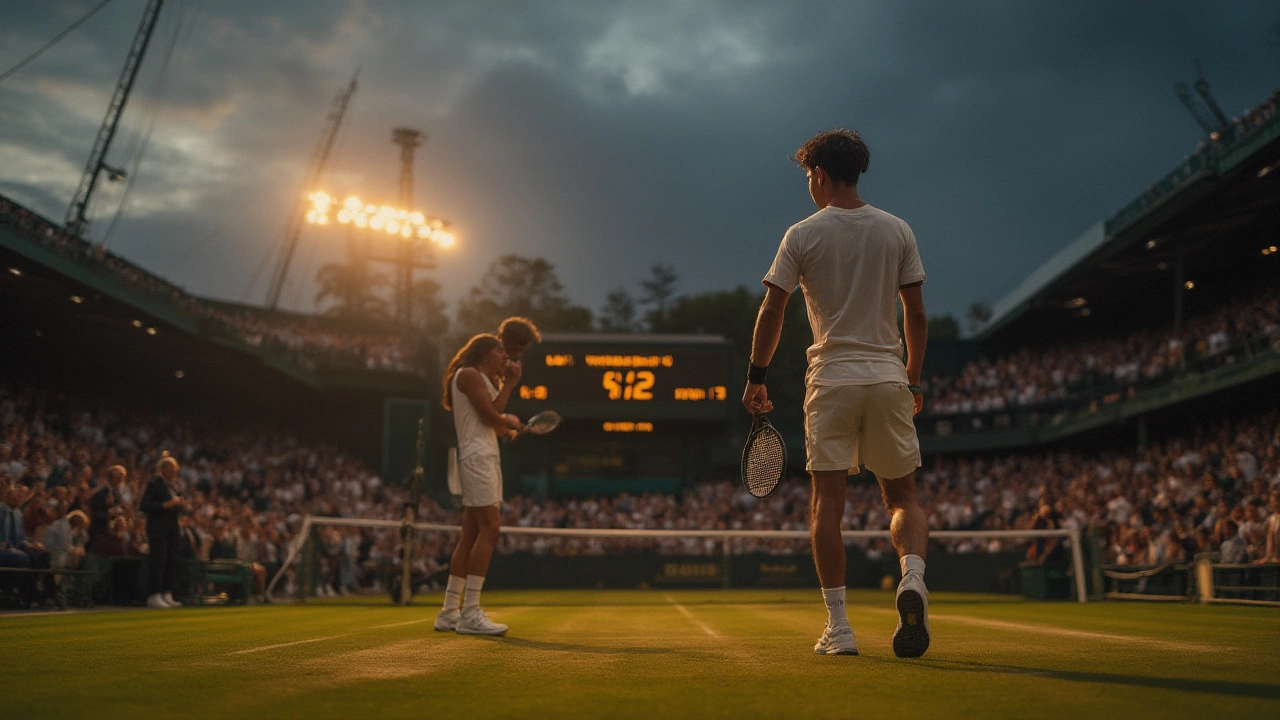Imagine stepping onto a tennis court, ready for a standard match, and knowing you might not see the locker room until days later. Wimbledon 2010 turned this wild scenario into a jaw-dropping reality when two men—John Isner and Nicolas Mahut—shattered all expectations, rewriting the history books right before everyone's eyes. This wasn’t just a tennis match; it became a feat of human endurance, both mental and physical, that’s still hard to wrap your head around years later. Let’s break down how this epic unfolded, why it went on forever, and why people are still talking about it every time someone mentions the word “endurance.”
The Epic Showdown: Everything About Isner vs. Mahut
Some sports matches drag on, but none quite like the famous Isner vs. Mahut battle at Wimbledon in 2010. Both players, not seeded to win the tournament, stepped onto Court 18 for what was supposed to be a basic first-round showdown. What no one saw coming was that their clash would last a staggering 11 hours and 5 minutes, spread over three days—June 22 to 24. It made headlines everywhere, drawing even non-tennis fans into the story. In case you’re wondering, the final score was 6–4, 3–6, 6–7(7), 7–6(3), 70–68, with Isner finally earning the last point. That’s right—the fifth set alone lasted 8 hours and 11 minutes, longer than most entire matches in tennis history.
The two players battled through darkness, exhaustion, and a stunned crowd who just could not believe what they were seeing. The rules at the time specified that men’s singles could not end in a final-set tiebreaker at Wimbledon, which meant the match simply couldn’t end until one player broke the other, leading to that absurd 70–68 final set. To put this in perspective, the previous longest match in men’s singles went around 6 hours and 33 minutes. Isner and Mahut nearly doubled that. No match, before or after, has ever quite compared in duration.
Mahut served first, and the game seesawed for hours. Both held their serves for what seemed like an eternity, as neither man’s nerves or muscles would give in. The audience kept growing, with word-of-mouth pulling in fans, journalists, and even fellow players. One journalist later said it felt like “watching two titans summon every ounce of will just to survive a never-ending onslaught.” As the sun went down each night, the match stopped only because of fading light. Even the most seasoned tennis pros and coaches started showing up courtside, trying to make sense of what they were seeing. The umpire, Mohamed Lahyani, famously stayed glued to his chair for the first 8-hour session, refusing food, drink, or even a bathroom break.
The sheer volume of records shattered during those three days is almost comical: most games in a match (183), most aces by a player in a match (Isner’s 113, Mahut’s 103), most total aces (216), and most points won (Mahut won 502). Even the match’s duration, by the hour, is mind-bending—longer than some entire tournaments. And get this: after the match, both players still took to the doubles court. Isner, limping and with glassed-over eyes, lost immediately, while Mahut toughed it out for another round. That just shows how mind-bogglingly tough these guys are, mentally and physically.
Breaking Down the Records: A Closer Look at the Stats
Let’s dive into the numbers—because this marathon match is literally in the Guinness Book of World Records more than once. Here’s a quick table to break down some of the mind-blowing stats no other match has even come close to touching:
| Record | Isner vs. Mahut (Wimbledon 2010) | Previous Record |
|---|---|---|
| Longest Match Time | 11 hours 5 minutes | 6 hours 33 minutes |
| Most Games in a Match | 183 | 112 (French Open 1973) |
| Most Games in a Set | 138 (5th set) | 48 (Wimbledon 1969) |
| Most Aces (Player) | 113 (Isner) | 78 |
| Most Aces (Combined) | 216 | 96 |
| Most Points Won | Mahut: 502 | Previously unknown |
Watching the match, every serve felt loaded with tension. Both men used their huge serves to their advantage, hitting more than 100 aces each—another record smashed. The fifth set alone became a set within a set, the lead swinging back and forth. Mahut even broke Isner at 50–49, only to get broken right back. At one point, Isner cramped up, barely able to move, but somehow he pushed through. By the last day, trainers were keeping ice packs ready, and physios hung around for quick massages whenever play paused. Even for pro athletes used to tough training regimes, this was another level.
It wasn’t just the players who struggled. The umpire, Mohamed Lahyani, became an internet celebrity for his dedication. He sat glued to his chair for the entire first day—nearly eight hours—barely moving, not eating, and apparently refusing bathroom breaks. Spectators joked that he deserved his own trophy for endurance. Mahut’s parents sat through most of the match, sometimes anxiously pacing outside the court but never losing faith. Meanwhile, Isner’s friends back home stayed up through the night, following the drama through Twitter and live streams, unable to believe how long their guy was out there.
What makes these numbers so incredible is that they’re unlikely ever to be broken. In 2019, Wimbledon introduced final-set tiebreakers to avoid matches spinning out forever. That means Isner-Mahut is probably safe at the top of the record books—no one’s likely to challenge them for “longest match ever” for decades, if ever.

What Makes a Marathon Match – The Rules That Kept the Battle Going
Why did Isner and Mahut end up locked in this epic? The rules at the time had everything to do with it. Before 2019, Wimbledon—and a few other Grand Slams—required men’s singles matches to be won by a margin of two games in the fifth set, with no tiebreaker. That meant if both players refused to yield on their serve, the set could drag on forever—or at least until someone blinked.
And on grass courts, where big servers thrive, breaking serve is especially tough. Isner, at 6’10” (208 cm), has one of the most powerful and accurate serves in history. Mahut, smaller but crafty and lightning quick, drove deep volleys and kept pace. They traded powerful aces and rocket forehands, but neither could break through for hours at a time. The match surpassed all logic. Unless one man blinked, it just wasn’t going to end.
Major tournaments learned a lot from the spectacle. By 2019, Wimbledon changed the rules so final sets now end in a tiebreaker if they hit 12–12. The Australian Open uses a super tiebreak at 6–6 in the final set, and even Roland-Garros (French Open) switched to final-set tiebreakers. The Isner-Mahut match didn’t just break records—it warped the very rules of the game. Long, grinding battles like this are now impossible, at least at the biggest events. Players today can still have long matches, but there’s always a built-in escape hatch, unlike in 2010.
Fans still love to recall Isner’s battered body after the match. He could barely get out of his chair and didn’t win another game at the tournament, understandably losing his next match in straight sets. Mahut, exhausted but still standing, got more applause than any loser in history. The two men, once strangers, are now forever linked in tennis lore.
How To Survive a Tennis Marathon: Lessons From Isner and Mahut
Enduring a marathon match isn’t just about tennis skills. It’s about physical fitness, mental toughness, nutrition, rest, and pure stubbornness. Isner and Mahut survived because they combined all those things, and a little luck with injuries kept both pretty much on their feet. Here’s what players—and weekend warriors—can learn from the ultimate test of tennis endurance.
- Physical Preparation: Neither player could’ve lasted nearly 11 hours if they hadn’t logged thousands of hours in the gym and on court. Daily strength and stamina training matters—and plenty of hydration, stretching, and massage.
- Mental Toughness: Most athletes hit a wall long before double-digit hours. Both men kept their focus, rally after rally, because they’d trained themselves to stay mentally tough through grueling workouts and smaller matches. Visualization, positive self-talk, and sticking to a routine played a huge part.
- Recovery Routine: Ice baths, quick sugar boosts, light snacks, and rest during pauses helped. During the longest stretches, players need salt tablets and simple carbs—bananas, energy gels, or quick protein—to stop cramping up.
- Tactical Adjustments: Both players adjusted their styles. Isner pressed his serve, kept points short, and saved energy between serves. Mahut, known for playing longer rallies, dialed it back and attacked the net whenever he could to avoid getting dragged into endless baseline battles. Changing tactics—even just to keep their limbs fresh—helped take some edge off the fatigue.
- Support System: Their coaches, trainers, and even the crowd were lifelines. A pat on the back, encouragement from a voice in the stands, or just seeing family and friends helped push them onward.
If you end up facing a marathon on the court, don’t think you need to match these legends. But take a page from their book: pace yourself, stay fueled and hydrated, rest when you get the chance, and above all, don’t let your head drop. Endurance is as much about what’s between your ears as what’s in your legs.

The Legacy: How Isner vs. Mahut Changed Tennis Forever
It’s not just the record books that changed after the longest tennis match in history. Fans came away with a new understanding of what the human body—pushed by drive and determination—can actually do. The match turned both Isner and Mahut into household names, at least for people who know tennis. Even the umpire, Lahyani, got legendary status among fans. Court 18 at Wimbledon is now a minor tourist attraction, with a plaque memorializing the battlefield where history happened.
The effect also rippled through the tennis world. Wimbledon and the other Slams realized that, exciting as these marathons can be, they come at a cost: players become too exhausted, scheduling turns chaotic, and nobody really wants to risk injury for an extra day of play. The rule changes mean no one will have to go through what Isner and Mahut did, but their story will be part of tennis culture forever. Even in other sports, people point to this match when talking about the upper limits of human endurance.
Besides records, Isner vs. Mahut gave millions of tennis fans—and average people—a renewed appreciation for resilience. Sometimes greatness comes from refusing to give up, even when every muscle screams “stop.” Maybe that’s why anytime a tennis match goes long on TV, commentators instantly recall the magical, exhausting three days when two men just wouldn’t quit. If you’ve ever wondered just how far you could push yourself, look no further than Wimbledon 2010, Court 18. It’s the story of two ordinary guys who did the extraordinary, just because nobody told them to stop.
